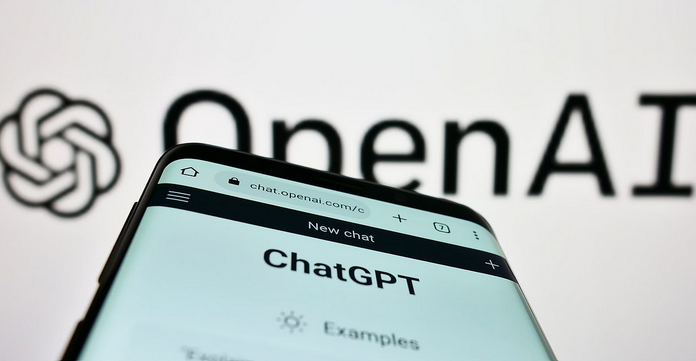IBM Revolutionises Threat Detection and Response with Cutting-Edge AI-Powered Cybersecurity Assistant

In today’s increasingly complex cyber threat landscape, organisations face mounting challenges in managing and responding to security incidents. To address these challenges, IBM is at the forefront of innovation with its new AI-powered Threat Detection and Response (TDR) services. The tech giant has unveiled the IBM Consulting Cybersecurity Assistant, a transformative tool designed to enhance threat management through advanced generative AI technology.
Unveiling the IBM Consulting Cybersecurity Assistant
IBM’s new Cybersecurity Assistant is set to redefine how organisations handle cybersecurity threats. Powered by IBM’s watsonx data and AI platform, this state-of-the-art tool is designed to streamline and accelerate threat detection and response processes. Built in collaboration with IBM Research, the Assistant is a key component of IBM Consulting Advantage, the company’s AI services platform that offers a range of AI-driven tools to improve client security postures.
How the Cybersecurity Assistant Enhances Threat Management
The IBM Consulting Cybersecurity Assistant integrates generative AI with existing automation technologies to address the evolving nature of cyber threats. Here’s how this cutting-edge tool can transform security operations:
- Accelerated Threat Investigations: One of the most significant features of the Cybersecurity Assistant is its ability to expedite threat investigations. By leveraging historical correlation analysis, the Assistant cross-references current alerts with past data from various sources such as SIEM (Security Information and Event Management), network, EDR (Endpoint Detection and Response), and telemetry systems. This holistic approach provides a comprehensive view of attack sequences, enabling security analysts to respond with greater accuracy and speed. The tool also offers a timeline view of attacks and auto-recommends actions based on historical patterns, significantly reducing the time attackers can dwell within a network.
- Streamlined Operational Tasks: The Assistant is equipped with an advanced generative AI conversational engine that simplifies various operational tasks. It can handle requests such as ticket management, log retrieval, and command explanations. This functionality not only helps manage complex security events more efficiently but also boosts overall productivity within the Security Operations Center (SOC). By automating routine tasks, security analysts can focus on more critical aspects of threat management.
- Enhanced Alert Management: IBM’s TDR services are already capable of autonomously escalating or resolving up to 85% of alerts. With the integration of the Cybersecurity Assistant, the remaining alerts requiring human intervention are processed more efficiently. The Assistant uses historical data and client-specific threat patterns to recommend appropriate actions, improving the speed and accuracy of threat response.
- Real-Time Insights and Support: The Assistant’s conversational engine provides real-time support, offering insights and assistance with tasks such as opening or summarising tickets. This real-time capability helps analysts manage their workload more effectively and provides a deeper context for understanding and responding to security threats.
The Impact of AI on Cybersecurity
The addition of the Cybersecurity Assistant to IBM’s TDR services has already demonstrated notable improvements. For instance, one client reported a 48% reduction in alert investigation times, showcasing the effectiveness of the new tool in streamlining threat management. This reduction in response times not only enhances overall security efficiency but also helps mitigate potential damage from cyber threats.
Craig Robinson, Research Vice President for IDC’s Security Services Research Practice, highlights the significance of IBM’s advancements: “With IBM’s new AI-powered Cybersecurity Assistant, businesses gain a deeper insight into critical threats and benefit from technology that continuously learns from specific actions within their environment. This drives a cycle of increasingly accurate and rapid threat investigations, which is especially crucial given the current shortage of security resources and the growing number of security risks.”
IBM’s Commitment to Responsible AI and Data Governance
IBM’s introduction of the Cybersecurity Assistant is part of a broader strategy to advance its AI capabilities while maintaining strong data governance practices. The company’s recent focus on data governance includes co-creating Data Provenance Standards and advocating for robust enterprise data standards. This commitment to responsible AI ensures that IBM’s technologies are not only innovative but also trustworthy and effective.
Conclusion
IBM’s new AI-powered Cybersecurity Assistant represents a significant leap forward in threat detection and response. By combining generative AI with existing automation technologies, IBM is providing organisations with a powerful tool to enhance their cybersecurity measures. The Assistant’s capabilities in accelerating threat investigations, streamlining operational tasks, and providing real-time insights make it a valuable asset for modern security teams. As the cyber threat landscape continues to evolve, IBM’s advancements promise to empower analysts with the tools needed to stay ahead of emerging threats and safeguard their organisations effectively.
With its focus on both cutting-edge technology and responsible AI practices, IBM is leading the way in transforming cybersecurity operations and helping businesses navigate the complexities of today’s digital world.


















